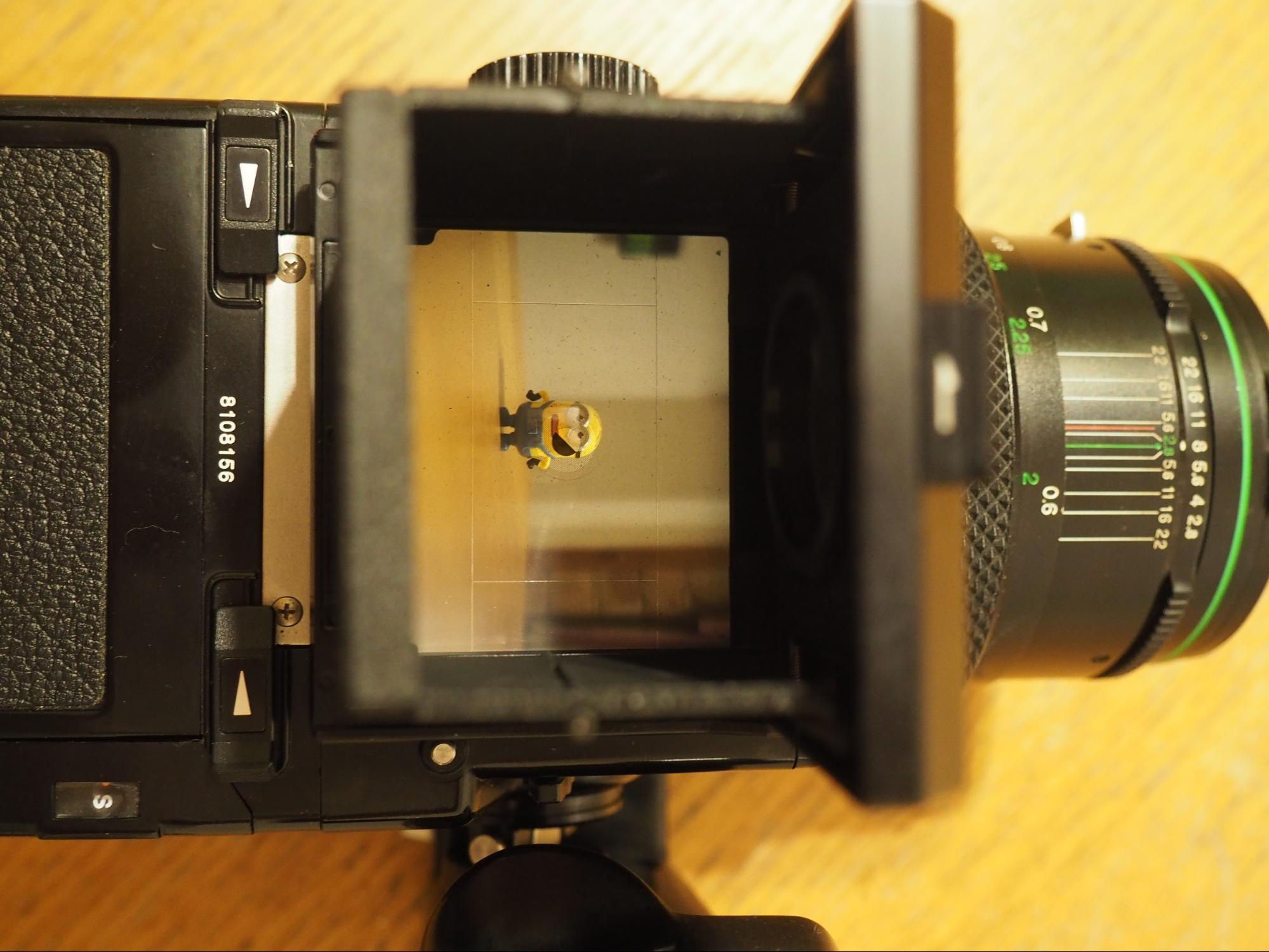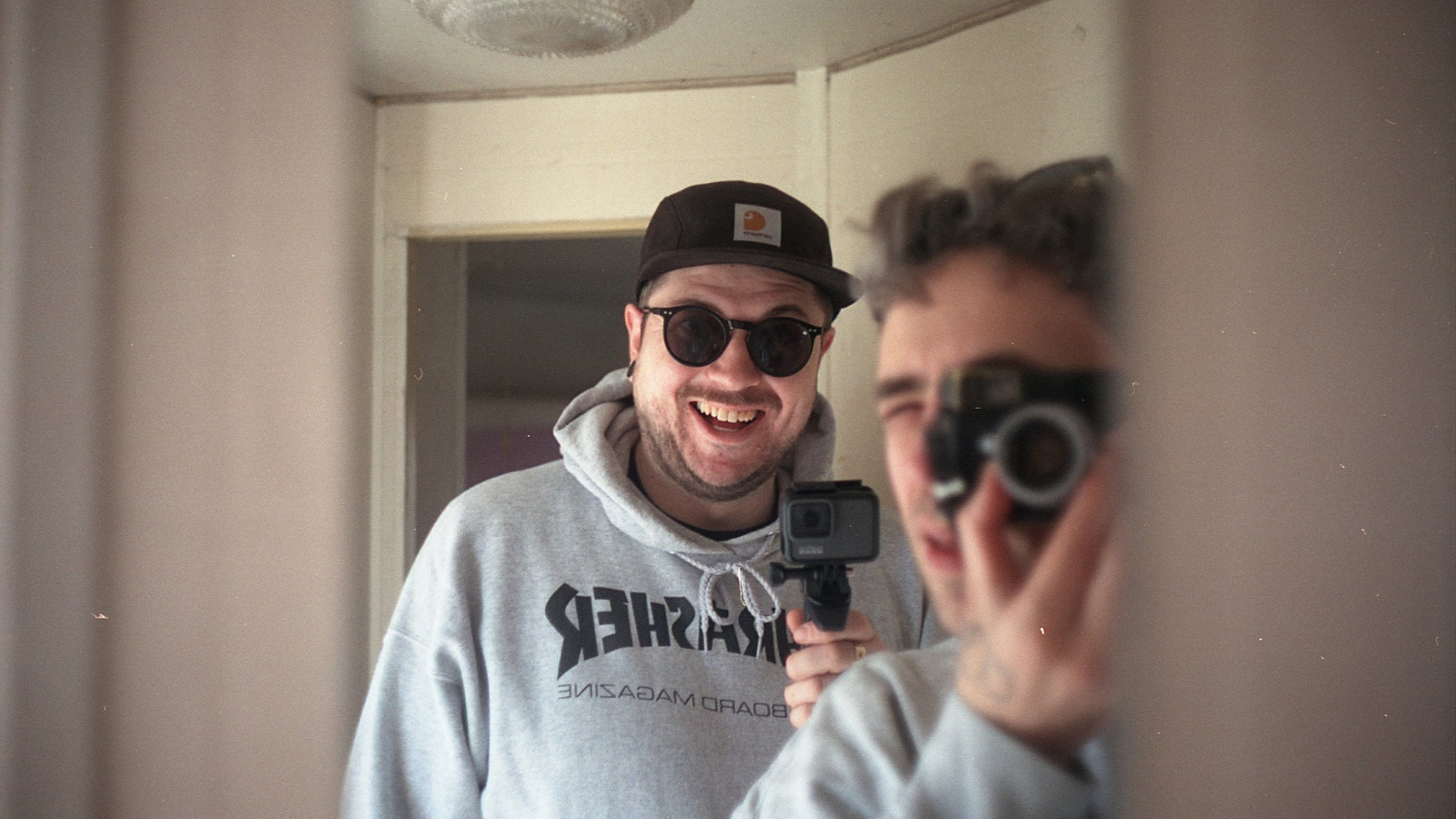Recent posts
Shop the article

An Introduction to 120 Film: Medium Format Fun
By Paul McKay
Today's post is written by Andrew Walmsley - best known as the 'Phlogger' on his blog and podcast! Andrew is a passionate film photographer and wants to spend a bit of time talking 120 basics: what is 120 (medium format) film and what are the pros and cons of shooting it versus the more common 35mm film. Andrew - take it away!
What is 120 film?
120 film is medium format film - the terms can be used interchangeably. And I know it’s quite confusing having so many different formats. In reality, 35mm film is the common choice (some companies don’t sell 120 film at all). A “120” film is designed for cameras in the “medium format” category. Just remember cameras are normally defined by the size of the film they use (think sensor size). However, this isn’t always true, so Olympus make a famous camera called Pen, which has a half size sensor. This actually uses 35mm film but each frame on the film will be 2 shots on the camera.

In the medium format world, there are a variety of sensor sizes which include 6 x 4.5, 6x6 and 6x9 (there are more). Just like the Olympus PEN, this sensor size affects how many pictures you get from the film. So you can get from 15 shots (at 6x4.5) to only 8 shots on a 6x9! Technically it’s called a film roll, as it has a spool that spins, the negative then has some backing paper around it. The backing paper protects the film and is labelled at the start and each exposure/frame too.
Why 120 film?
The main reason people shoot 120 film is because it produces a larger negative, which has a few significant benefits.
- Detail. A larger negative means more data captured by the camera and the film. This will also translate to larger files if you choose to scan your negatives: personally I have a few 100MB files from high quality scans. Also because you have a larger picture you can crop the image more aggressively without losing detail versus a 35mm picture at the same ratio - or produce larger prints without compromising detail or resolution
- Grain. Technically you tend to get the same amount of grain per square inch as in other formats - but because the total image data captured is much greater, this grain is less noticeable than in 35mm or similar. In other words, the image:grain ratio is much higher in medium format - with the practical implication that you can use higher ISO films without the image being as visibly affected by grain
An interesting - and often perplexing - side effect of the larger film area is that lens focal lengths aren't the same. You have to remember that a 50mm lens on 35mm film camera and 50mm lens on a medium format are not the same! To get the same sort of shot on a 6x4.5 camera you would need a focal length of approx 80mm. The medium format would also have a shallower depth of field, which may be useful for portraiture but not great for landscapes and other genres. If you were shooting on a 6x6 camera, your equivalent lens would be nearer 90mm.
What about cameras?
So you know where to buy your film from now (Analogue Wonderland of course) you will also need that lump of metal called a camera. Now please don’t worry about this, you don’t need to buy a £20,000 Hasselblad! The camera I use is from a company called Bronica (no longer trading) but they work in the same way. Let's talk style, lenses, backs, viewfinders and grips.
Style
The common makes like Hasselblad, Mamiya and Broncia follow the same box type modular approach. So you have a central box (it's just a mirror), which you then attach a lens, a film back and viewfinder.

However, there are other options too, rangefinders, TLR and the old folding cameras too. Each has its own merits and disadvantages. The rangefinders are rare and expensive, generally speaking. TLRs are very different (twin lens) and not something I have tried as yet. Folding cameras are just older and simpler devices, but not for the faint hearted - often don’t have viewfinder and fixed apertures too.
Lenses
Even in the world of medium format film there are different focal lengths available but the most common are primes. The zoom lenses are more expensive and rare (so harder to obtain).
Interchangeable backs
One of the great differences with medium format is being able to change the back. This is a huge advantage over 35mm. So imagine you had high iso film in (like Delta 3200) but wanted to shoot in daylight. Although you can rewind your 35mm film and put it back in, with medium you can load several backs. When you want to swap you just put the darkslide in that keeps the film light tight and swap (one button). This also helps if you are shooting many images, so you can preload and fire away and not lose time changing during your session.

In the prime age of Polaroid, many professionals would use a polaroid film as a test exposure shot. Although this took practice took a significant hit with the demise of Polaroid, there is fresh movement in adapting these for Instax and Polaroid Originals (previously the Impossible Project).
Viewfinders
Again, because of the box design, you can swap between different viewfinders too! So unlike 35mm you can choose what you prefer. For instance if you enjoy street photography, then a waist level finder is really useful (you are not as noticed as people just see you looking down). There are traditional viewfinders like a standard SLR and some of these have built in light meters (most cameras are very manual and don’t have meters!) You can also add different focusing screens to the camera too, for those with vision issues.

Grips
Another great feature of the modular approach is ability to choose different grips. Because most of the medium format are boxes, there a small winders, but there are massive grips that are more comfy. On the Bronica I use, it supposedly allows fast rate of firing (however it's big and heavy)
Which 120 film?
We have talked about the theory of 120 film and what cameras are available but you also want to know what film choices you have?
Colour 120 film
Although the amount of film stocks does not much 35mm, there are some great options. Kodak’s range is a great start with Ektar and Portra. Don’t forget Kodak have promised to bring Ektachrome back this year in 120 format, if you want to shoot colour positives (slide film)! Fuji’s pro 400, Velvia and Provia are still available, but end of life, so don’t hesitate too long. You then have different films like the Cinestill 800 and x-pro daylight film. For those who want to experiment Lomography have a few options.

Black and White 120 film
This is where medium format shines, there are many more options from Adox, Bergger, Foma, Ilford, Rollei and Washi to name a few. These cover a wide variety, so you have low grain films from Adox to c41 black white from Ilford. With Washi you have such unique choices too (from high contrast to low grain).
For those on budgets there is the legendary HP5 by Ilford to achieve consistent look and feel (you can push the iso to 800 + 1600 too). Ilford also has its Delta 3200 to help in those low light shots.
Conclusion
Hopefully after reading this article you will intrigued about this beautiful format. Please don’t be scared, some professionals still shoot this format today.
One of the useful features I found with my Bronica was a dedicated multi exposure button, which really helps you be creative. Yes of course the standard boxed medium format is heavier but straps are available (reasonable too). In fact I use my Bronica for street photography - hand held as it's not much heavier than a pro level DSLR!

Once you get used to loading 120 film (probably easier than 35mm) you will start to fall in love with the larger negatives. Yes you may get less images per roll but look at the size of the image and quality! If you are scared of not having a meter, use your mobile phone or take a small DSLR or 35mm film camera with you. You also have Sunny 16 to start with and it really becomes easy the more you shoot Don’t be afraid of using a digital camera for test shots, it's the final image that matters.
So get out there, borrow one of a friend and buy some 120 film now. Remember consistency, buy a few of the same type of film and see what happens. If you don’t believe me check out my website for photos, I’ve shot medium format at both the weddings I have been involved in. There are a couple of portrait sessions too, where the Bronica really stands out.

Although everyone will say the glass is important, the film and lighting is more so. You need the correct light to take a great picture, but you also need to know the ability of the film.
If you want any advice, drop a comment below or ask the team at Analogue Wonderland, they are a friendly bunch.
So go buy some 120 film now and enjoy exploring a medium format world!
Ready to dive in?
Keep Reading
View all
Processing Film in an NFL Stadium: WonderLab Touchdown
We sent our Lab Technician, Will, to team up with Miles from Expired Film Club at a New York Jets NFL game, where he developed and scanned film photos live on-site from the MetLife Stadium bathroom - finishing before the game even ended!

FRONT: Sell, Print & Ship Your Photos

A Step Back in Time: Wet Plate Portraits with Dark Art Sessions
Amy and Paul stepped back in time for portraits with Corrine West at Dark Art Sessions, captured using the 170-year-old Victorian wet plate collodion process. Here’s how it all unfolded!
Subscribe to our newsletter 💌
Sign up for our newsletter to stay up to date on film photography news, sales and events:
Free Tracked Shipping
On all UK orders over £50
Passion For Film
An unbeatable range and an on-site lab
Our Customers Trust Us
Thousands of independent 5* reviews
All Deliveries are Carbon Neutral
Independently audited and verified by Planet
- Opens in a new window.





2 Comments -
Kate Johnson • -
Philip Lewis Lambert •
Is there any possibility that 220 film will return? Seems like a lot of us film users are using 120 format. I’d like to get more than 10 shots out of my Mamiya-7.
With a film camera do you scan negs to view the results on screen or do you have to have a wet darkroom available?